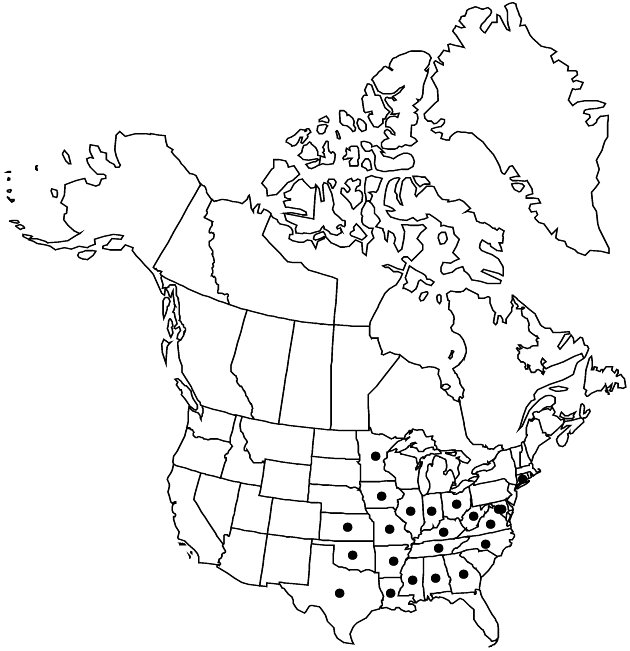Ambrosia bidentata
Fl. Bor.-Amer. 2: 182. 1803.
Annuals, 10–30 (–100+) cm. Stems erect. Leaves mostly opposite; petioles 0–0.5 mm; blades ± lanceolate to lance-linear, 15–40+ × 3–6 (–10+) mm, bases rounded to cordate, margins entire or with (1–) 2 (–4) basal lobes, abaxial and adaxial faces ± piloso-hispid and glanddotted. Pistillate heads clustered, proximal to staminates; florets 1. Staminate heads: peduncles 0–0.5 mm; involucres obliquely cupshaped (lateral lobe longer than others), 2.5–4 mm diam., piloso-hispid; florets 6–8+. Burs: bodies pyramidal, 5–8 mm, piloso-hispid, spines 4 (–5), ± distal, ± acerose, 0.5–1 mm, tips straight.
Phenology: Flowering Jul–Oct.
Habitat: Dry, disturbed sites
Elevation: 200–500 m
Distribution

Ala., Ark., Conn., D.C., Ga., Ill., Ind., Iowa, Kans., Ky., La., Md., Minn., Miss., Mo., N.C., Ohio, Okla., Tenn., Tex., Va., W.Va.
Discussion
Hybrids between Ambrosia bidentata and A. trifida have been recorded.
Selected References
None.
Lower Taxa
"piloso-hispid" is not a number.